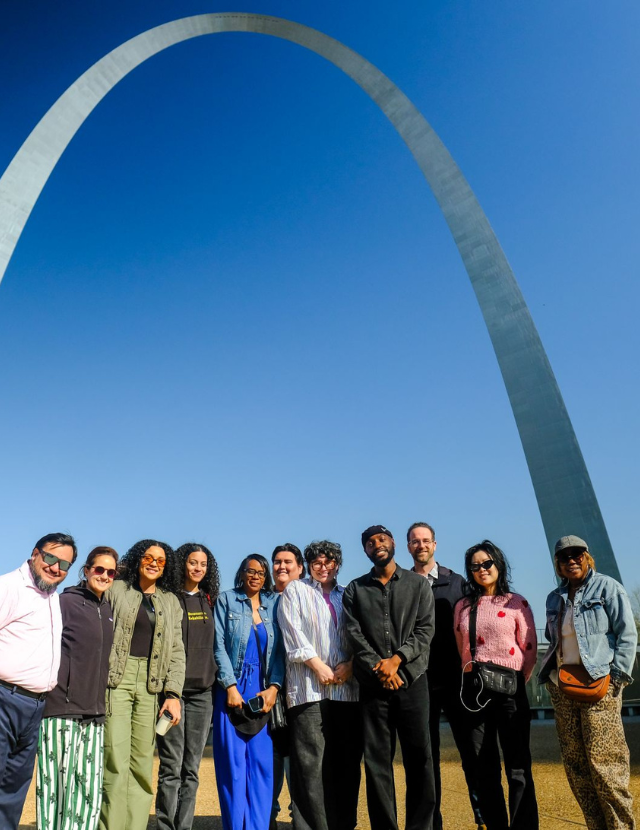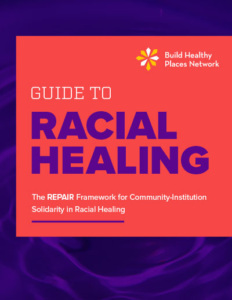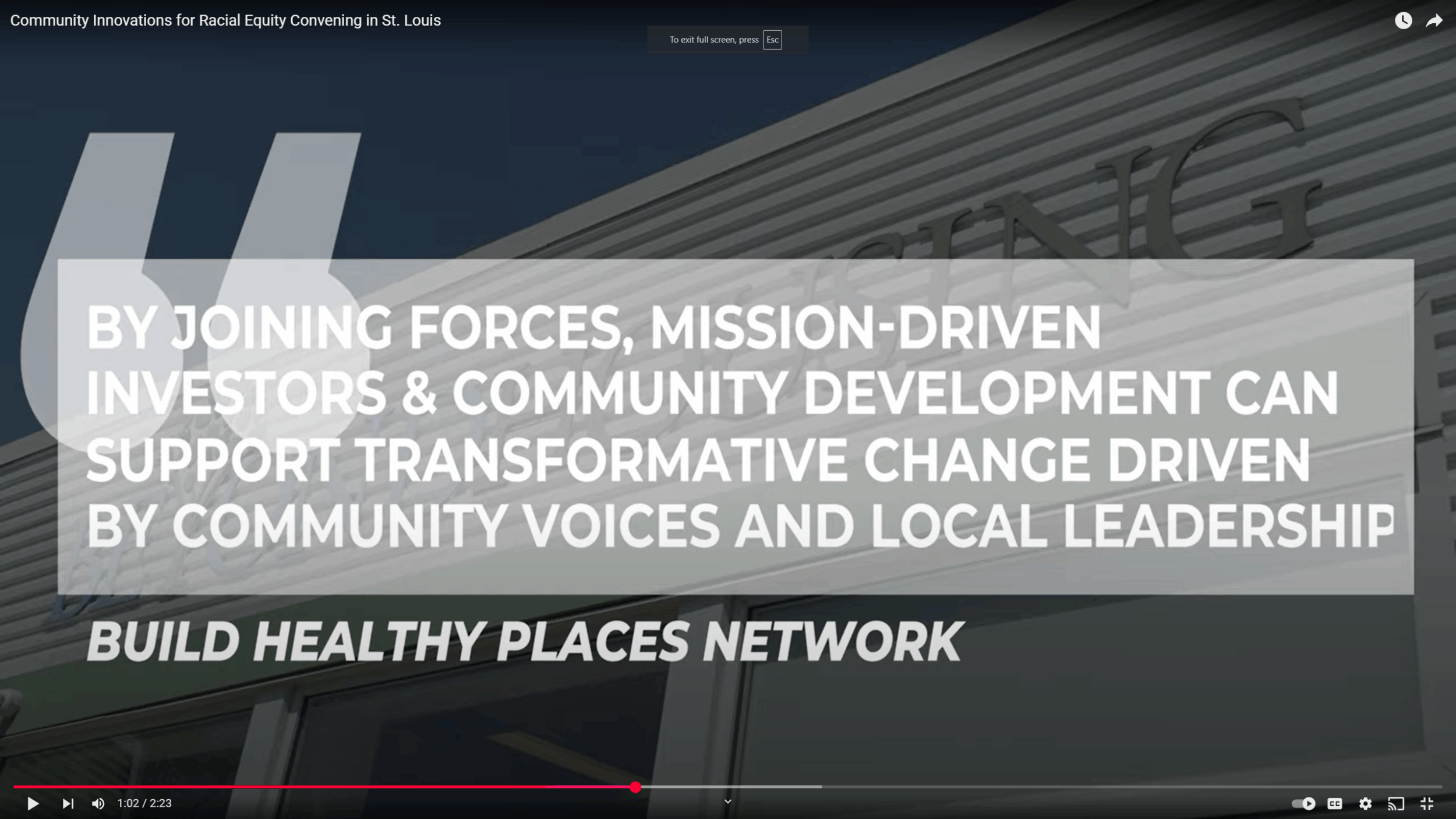Supporting BIPOC-Led Community Development Corporations to Advance Racial Equity
Program
Highlights

Through the CIRE initiative, PHI's Build Healthy Places Network supported ten BIPOC-led Community Development Corporations from across the country with $40,000 in funds and $60,000 in additional technical assistance to bolster their capacity for collaborating with the healthcare sector to advance racial equity.
$40K in funding plus $60k in additional TA provided by PHI's BHPN to ten BIPOC-led CDCs
40K+ online views of the REPAIR Framework for Community-Institution Solidarity in Racial Healing, which amplifies the transformative work spearheaded by the CIRE BIPOC-led CDC partners
-
Focus Areas
Capacity Building & Leadership, Healthy Communities -
Issues
Community Development -
Expertise
Coalition & Network Building
With funding from The Kresge Foundation and the W. K. Kellogg Foundation, PHI’s Build Healthy Places Network launched Community Innovations for Racial Equity to make racial equity an explicit goal of community development efforts and engage healthcare as a powerful and well-resourced partner to achieve shared racial equity goals.
Through the CIRE initiative, ten Black, Indigenous and People of Color (BIPOC)-led Community Development Corporations (CDCs) from across the country received $40,000 in funds plus in-kind technical assistance valued at $60,000, in order to bolster their capacity for collaborating with the healthcare sector to advance racial equity. As part of this opportunity, BIPOC-led CDC grantees were also able to work with a BIPOC-consultant that brings expertise and experience in cross-sector partnerships and racial justice.
From over 200 applications, Build Healthy Places Network selected ten BIPOC-led CDC awardees for the inaugural CIRE cohort:
- Miami Workers Center (Miami, FL)
- Sankofa Community Development Corporation (New Orleans, LA)
- Cihuapactli Collective (Phoenix, AZ)
- Spanish Lake CDC (St. Louis, MO)
- Co-op Dayton (Dayton, OH)
- Communities First, Inc. (Flint, MI)
- MQVN Community Development Consortium (New Orleans, LA)
- Virginia Community Voice (Richmond, VA)
- African Economic Development Solutions (St. Paul, MN)
- Power Center Community Development Corporation (Memphis, TN)
[Participation] has proven to be an invaluable asset to our work, as it has allowed us to connect with a diverse array of like-minded individuals and organizations who share our passion for creating positive change.CIRE Participant
We utilized the power-mapping tools and conducted a power-mapping training to the entire organization; we then separated into project-based teams and completed power mapping for each that included analysis of different power players/structures and whether or not they are aligned/supportive/not-supportive and how we can engage them more intentionally.CIRE Participant
We learned how to engage stakeholders more deeply by using the case-making strategies; we created concise language for the project tailored to specific stakeholders.CIRE Participant
CIRE focused on building local BIPOC-led community development capacity, supporting community power, exploring innovative community ownership models, and addressing the barriers and gaps within community development and health partnerships to effectively propel racial equity. The project did this through multiple approaches, including:
- Facilitating new connections and deepen existing connections between BIPOC-led Community Development Corporations (CDCs) and other peer organizations and provide increased access to resources, tools, and the larger national dialogue.
- Embedding capacity within these organizations to undertake community ownership models and health strategies that engage healthcare organizations (hospitals, healthcare systems, and health payors), Community Development Financial Intuitions, and other mission-driven investors.
- Championing race equity partnerships, policies, approaches and investments that magnify impacts and outcomes.
- Lifting up for a national audience insights, tools, resources and best practices for community-led and community-owned approaches for others doing work in this area.
Through these connections, we have gained an abundance of knowledge, resources, and insights that have greatly enhanced our ability to serve and empower our community.CIRE Participant
The connection with the other organizations and hearing their stories has been inspiring.CIRE Participant
Tools, Resources & Connections to Bolster Racial Equity & Community Power
 In September 2023, Build Healthy Places Network released the REPAIR Framework for Community-Institution Solidarity in Racial Healing, which amplifies the transformative work spearheaded by the CIRE BIPOC-led CDC partners. This resource guides organizations as they interrogate the role healthcare institutions can play in reconciling past harms and discusses approaches to mitigate the impact of systemic racism by building relationships, trust and collective community power. This resource also has potential to support projects engaged in systems change to address racial equity, promote trust building and healing.
In September 2023, Build Healthy Places Network released the REPAIR Framework for Community-Institution Solidarity in Racial Healing, which amplifies the transformative work spearheaded by the CIRE BIPOC-led CDC partners. This resource guides organizations as they interrogate the role healthcare institutions can play in reconciling past harms and discusses approaches to mitigate the impact of systemic racism by building relationships, trust and collective community power. This resource also has potential to support projects engaged in systems change to address racial equity, promote trust building and healing.
As of Spring 2024, there have been 40,000+ views of the REPAIR framework since launch. CIRE staff also presented the REPAIR framework in a webinar hosted by County Health Rankings and Roadmaps, with over 850 attendees from across the country. Webinar participants who filled out the post-webinar survey indicated that they were very or extremely likely to share the tool/framework with their colleagues and/or community members.
Build Healthy Places Network also hosted a series of CIRE webinars through their Network Commons series to explore racial healing approaches and community-driven data strategies. At the time, these webinars had the most registrants in BHPN history, with over 1400 registrants.
Building Bridges Across Sectors: Community Innovations for Racial Equity Convening
In April 2025, Build Healthy Places Network (BHPN) convened awardees of its CIRE initiative in St. Louis, MO, for a transformative in-person gathering. With generous support from The Kresge Foundation, CIRE fosters collaboration and capacity building among BIPOC-led and allied Community Development Corporations (CDCs) to advance health and racial equity. This convening aimed to strengthen connections, foster trust and facilitate peer-to-peer learning, all crucial for advancing community-led solutions.
Specifically, CIRE awardees from Riverside, CA; Sicangu Lakota Nation, SD; St. Louis, MO; Providence, RI; and Camden, NJ joined BHPN staff for two days of immersive community building and engagement. Co-hosted by Beyond Housing of St. Louis, a CIRE awardee.
A key element of the convening was highlighting the St. Louis community. BHPN engaged local, Black-owned businesses to support the local economy and provide authentic dialogue about community engagement models.
As the CIRE cohort gathered in St. Louis, a crucial theme emerged: the real-world impact of recent federal cuts on how these cuts impact organizations addressing systemic barriers to health and prosperity in their communities. This reflection laid the groundwork for deeper discussions and crystallized into key takeaways that will guide our collective work moving forward.
- Cultivating Relationships and Trust: This is more than just an activity; it’s a crucial mindset that fosters deep belonging and genuine connection. As highlighted in BHPN’s Crafting a Health Equity Centered Narrative, “Values drive policy. It’s not a science, it’s about understanding what people value in their communities that begin to shape hearts and minds.” This principle was central to our convening, guiding our approach to building a strong and supportive network among the CIRE cohort.
- Recognizing the Critical Need for Solidarity and Increased Philanthropic Support: The convening illuminated the stark reality of federal funding cuts severely impacting community development corporations. These cuts, resulting in staff reductions and suspension of essential projects, highlighted the urgent need for increased solidarity and a strengthened role for philanthropy. Participants acknowledged the importance of innovative funding models, emphasizing the necessity to advocate for robust philanthropic investment that ensures the long-term sustainability and growth of BIPOC-led and allied CDCs.
- Prioritizing Community Engagement and Learning: Storytelling became a powerful tool for organizations to share their hopes, challenges, and strategies for resilience. A key sentiment echoed was “all of us, or none,” highlighting the importance of collective action. This underscores that genuine community engagement involves listening, learning, and acting together.
- Advocating for Shifts in Investment and Power: Participants engaged in insightful discussions about evolving investment models. A panel of local hospital systems BJC Healthcare and SSM Health shared their approaches to community investment with the community development sector. Innovative ideas, such as leveraging local deposits, were introduced, aiming to shift power and resources back into the hands of the community.
Work With Us
You change the world. We do the rest. Explore fiscal sponsorship at PHI.
Support Us
Together, we can accelerate our response to public health’s most critical issues.
Find Employment
Begin your career at the Public Health Institute.

